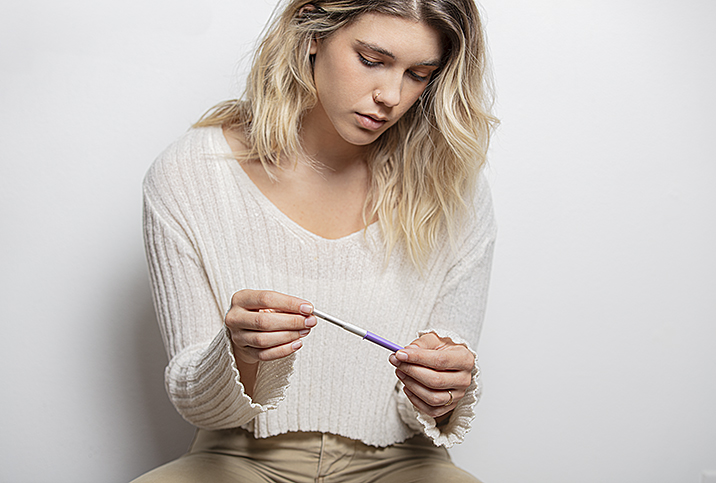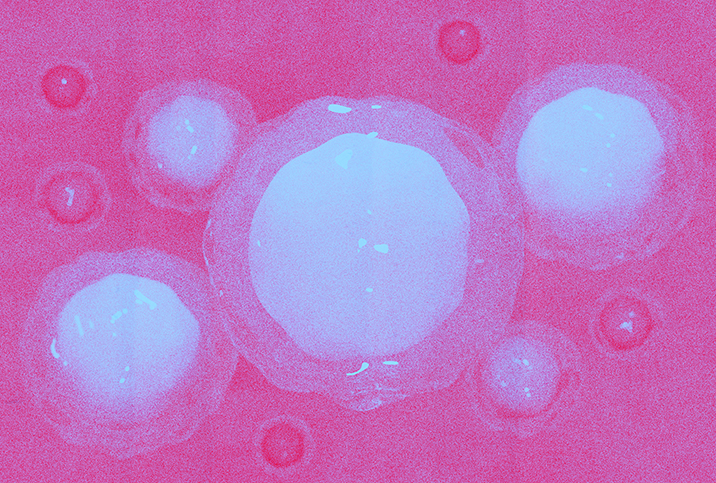When the Second Time Isn't Always the Charm for Conception

Imagine a happy couple. They've had their first child and are already talking about having another. They had no issues conceiving the first time, but their subsequent attempts keep failing, month after month. What, they wonder, is happening?
This couple may be experiencing secondary infertility, as in the inability to conceive or carry a pregnancy to full term after previously giving birth.
"The previous birth must have occurred without help from fertility treatments, and secondary infertility is diagnosed after trying unsuccessfully to conceive for six months to a year depending on the woman's age," said Luciano Nardo, M.D., a board-certified OB-GYN and the founder of NOW-fertility, an assisted-conception resource in London.
Couples trying to conceive a second or third child at an older age have a higher likelihood of experiencing secondary infertility. For example, at age 25, about 1 in 7 couples experience infertility. Between ages 35 and 39, as many as 1 in 2 couples may experience difficulties conceiving. The prevalence of secondary infertility increases sharply with age, rising from 3 percent in women ages 20 through 24 to 30 percent in women older than 40, Nardo explained.
What causes secondary infertility?
Secondary infertility's underpinnings are similar to those of primary infertility, said Anupama Kathiresan, M.D., a Los Angeles-based reproductive endocrinologist with Kindbody, which specializes in fertility and gynecological care.
About one-third of infertility cases are related to male infertility, another third are related to female infertility and another third are related to problems in both the man and the woman, or the problems remain unexplained.
Some of the common causes of secondary infertility in women include:
- Problems with the quantity or quality of eggs due to advanced age
- Damaged or blocked fallopian tubes due to pelvic infections, such as chlamydia or gonorrhea
- Problems with the uterus, such as intrauterine adhesions
- Scarring from previous surgeries, such as a cesarean or dilation and curettage
- Development of fibroids
- Conditions such as endometriosis or polycystic ovary syndrome (PCOS)
- Weight gain or other lifestyle changes that can lead to ovary dysfunction
- Hormone imbalances
- Certain medications
- Breastfeeding
Some of the common causes of secondary infertility in men include:
- Abnormal sperm production
- Problems with sexual intercourse, such as erectile dysfunction (ED), premature ejaculation or retrograde ejaculation
- Abnormal sperm parameters, including low or absent sperm count, decreased sperm movement or motility, or problems with sperm shape
- Hormone imbalances, such as reduced testosterone levels
- Genital infections, some of which can interfere with sperm production or sperm health or cause scarring that blocks the passage of sperm
- Chronic diseases, such as thyroid diseases, diabetes and celiac disease
- A varicocele, which is a swelling of the veins that drain the testicle and is reversible but can lead to reduced sperm quantity and quality
- Certain drugs that affect sperm count and quality, such as medications to treat high blood pressure, long-term anabolic steroid use, certain ulcer drugs and some arthritis drugs
- Weight gain or other lifestyle changes
- Overexposure to heat as elevated temperatures may impair sperm production and function
- Overexposure to certain environmental elements, such as toxins and chemicals that reduce sperm production or sperm function
Treatment options for secondary infertility
"If there is an identifiable cause, treatment is geared towards that specific fertility issue," said Shaun Williams, M.D., a fertility specialist and a partner at Illume Fertility, which has clinics in Connecticut and New York. "For example, if there is a low sperm count identified for the man, intrauterine insemination or in vitro fertilization can improve fertilization and pregnancy rates."
He added that surgery might be necessary if an anatomical problem has developed since a previous pregnancy.
Some of the most common treatments available include:
- Assisted reproductive technology, such as in vitro fertilization (IVF), intrauterine insemination (IUI) or intracytoplasmic sperm injection (ICSI)
- Lifestyle changes, such as smoking cessation, weight loss, hormonal treatment, nutrition, stress reduction or use of antioxidants
- Surgical treatment for problems such as a varicocele in men or uterine adhesions in women
Nardo explained if you are younger than 35, you should seek help if you don't conceive after one year of trying. People ages 35 and older should get help after six months.
Infertility associated with advancing maternal age can be difficult to overcome, according to Williams, but treatments geared toward improving ovarian function and egg production can increase the chances of pregnancy.
"Many couples demonstrate 'unexplained infertility' if an initial evaluation does not find any identifiable problems," Williams said, adding that even in these situations, treatment options are available that might increase the likelihood of a successful pregnancy. "For couples who have had a prior pregnancy and are experiencing secondary infertility, there is a higher likelihood that pregnancy will occur again with fertility treatments."
Success rates for treatments
Secondary infertility occurs more frequently as the age of the egg progresses, Williams explained.
"You can often successfully overcome male-factor infertility issues with more advanced treatments such as IVF, but the likelihood of success still depends primarily on the age of the egg," he said.
Nardo concurred, stating the single most important prognostic factor for the success of treatment in secondary infertility is the female partner's age. He shared some statistics on the success of different infertility treatments:
- The reported pregnancy rate after varicocelectomy, the removal of varicoceles, is between 25 percent and 30 percent.
- IUI results in a 10 percent to 15 percent pregnancy rate after each attempt in women younger than 35.
- In women younger than 35, a 50 percent live birth rate is expected with ICSI treatment, however, this rate drops with advancing age to less than 10 percent after age 41.
Kathiresan stressed success rates for fertility treatment vary and depend on a number of factors, such as the woman's age, ovarian reserve parameters, workup findings and the duration of infertility.
"Discussing these factors with a fertility specialist is essential to determine what your individual success rates are," she added.


















